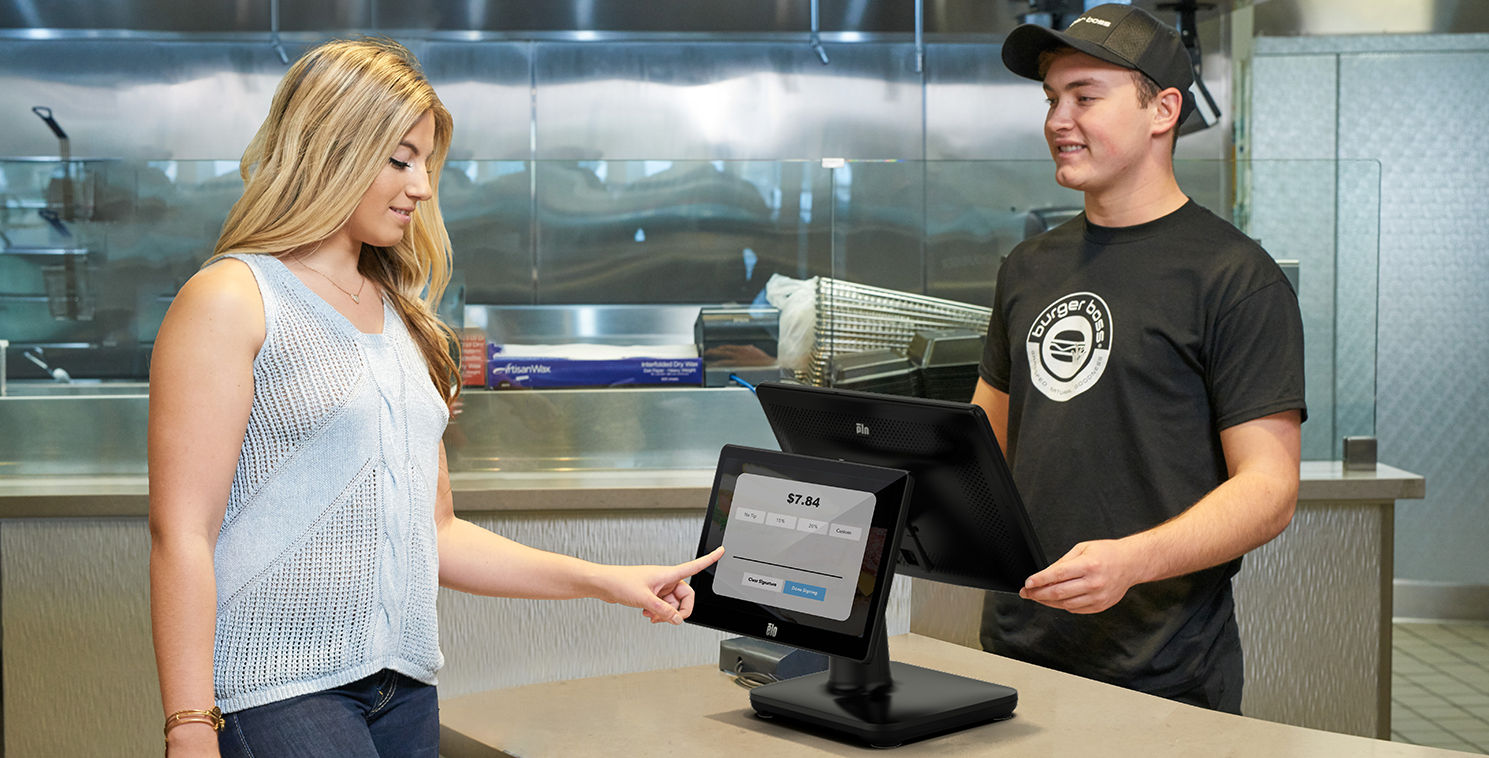October 25, 2023
Frictionless Payments: The Future of Fast, Easy TransactionsFrictionless Payments: The Future of Fast, Easy Transactions

Consumers want ease and convenience — and they don’t want to wait. Research from Waitwhile found that 75 percent of U.S. consumers have left a store without making a purchase because there was a line. Keeping customers moving with fast and simple transactions via frictionless payments will eliminate the wait and increase customer satisfaction.
What are frictionless payments?
“Frictionless payments” refers to transactions that are clear, intuitive, and barrier-free. Frictionless payments move transactions to the background, enabling a customer, for example, to enjoy a dining experience without a payment process awkwardly interrupting it.
Future growth and customer expectations of frictionless payments
The COVID-19 pandemic marked a turning point for many changes in consumer behaviors and technology adoption. In particular, the pandemic accelerated frictionless payment trends, increased cashless commerce, and underscored merchants’ needs for new ways to accept payments, such as with mobile devices and at self-service kiosks, to meet customers’ demands.
For example, in 2021, one in every five consumers made a contactless payment. In response, 58 percent of merchants deployed contactless payment technology — that's a 40 percent increase over 2019!
Best frictionless payment methods
The best frictionless payment methods both streamline transactions and allow merchants to personalize checkout experiences and incorporate loyalty-building. Consider these options:
- Contactless card payments
With contactless card payments, consumers simply tap or wave their card near a near-field communication (NFC)-enabled card reader. Transactions are secure, running on the same infrastructure as EMV chip card payments, but require less effort from the consumer. One out of every ten Visa card transactions in stores in the U.S. is now contactless.
- NFC-enabled mobile wallets
Similar to contactless cards, mobile wallets provide frictionless payments and are gaining ground in the U.S. In fact, the percentage of consumers using a mobile wallet from early 2021 to late 2022 increased from 38 percent to 49 percent. Mobile wallets have simplified payments down to a wave of your phone: Using Apple Pay or Google Wallet requires you to simply wave your device with a payment app over an NFC-enabled card reader, and the transaction is complete.
- Biometric payments
Biometric payments, which use facial recognition, fingerprint scanners, or palm vein readers to process transactions, are poised for growth. Kenneth Research expects biometric payments to grow at a CAGR of 49 percent through 2027, reaching as much as a $15.59 trillion market value.
To implement biometric payments, consumers register their banking and identity information at a store kiosk and then allow the system to take a scan. When it’s time to pay, a camera or scanner authenticates the customer’s identity, and the encrypted account information associated with the scan is used for the transaction. Biometric payments provide faster checkout and enhanced security for the consumer, and they’re more convenient. Customers don’t have to carry a wallet or even a smartphone to shop.
- QR code payments
Android and iOS devices implementing QR code scanners natively in camera apps has contributed to a surge in QR code adoption. In 2011, only 6.2 percent of U.S. households had scanned a QR code. In 2022, 26 percent of consumers had used the technology.
Making payments using this method, consumers scan a QR code with their smartphones, which then redirects them to a mobile checkout page to complete their transactions. Retailers can adopt this frictionless payment method by leveraging customer-facing POS displays at the checkout counter to display codes for consumers to scan and process their transactions quickly. Additionally, QR codes printed at the bottom of a restaurant receipt allow diners to pay at their convenience and without assistance from a server.
- Self-checkout kiosks
Self-checkout kiosks allow consumers to control the entire purchase experience exactly when they are ready without having to wait in a long line or worry about patrons behind them. According to IBM research, 71 percent of consumers say they use or would like to use a self-checkout option, and one third want self-checkout for faster experiences. The self-checkout market is evidence that merchants are responding. The global market is set to grow from $32 billion in 2020 to $88.33 billion by 2030.
Benefits of removing friction from the payment process
While much of the emphasis is on meeting consumer expectations and enhancing experiences for them, frictionless payments also offer several benefits to merchants, including:
- Operational efficiency
Payment processes are streamlined, and throughput in lanes can improve so that fewer employees are required to manage checkout.
- New customers
Regardless of other changes in consumer behavior, customers always seek convenience. Merchants that offer frictionless ways to pay can attract new customers.
- Customer loyalty
Delivering great experiences that consumers want can influence their purchasing decisions in the future.
- Differentiate from the competition
Staying on the cutting edge of payments demonstrates that a brand is modern, efficient, and customer-focused.
Challenges of implementing frictionless payments
As with any technology implementation, there are challenges merchants will need to overcome when transitioning to new payment methods. Merchants will need to train or retrain employees on new systems and, in some cases, redefine the employee’s role, for example, to manage multiple self-checkouts rather than work behind a register.
Additionally, deploying new technology with legacy systems will require expertise to ensure all systems are integrated and function properly. Merchants will also need to find effective ways to publicize their new payment options to help generate interest and ROI.
Build a Bright Future
The benefits of implementing frictionless payments, whether contactless, QR code, biometric, or self-service, far outweigh the challenges. These payment methods delight customers with fast, efficient checkout experiences, less waiting, and convenience.
Contact Elo for information on systems that support customer-centric interactions with less friction.